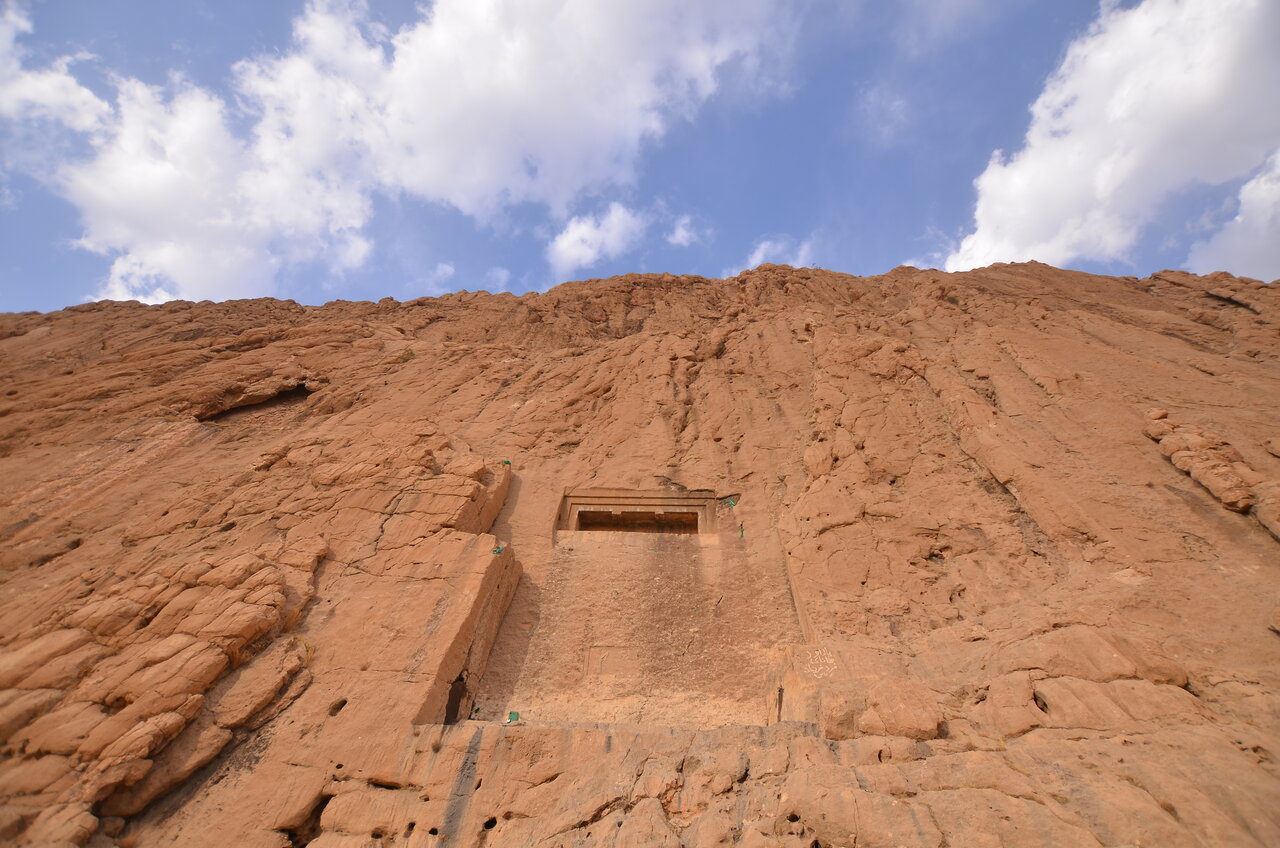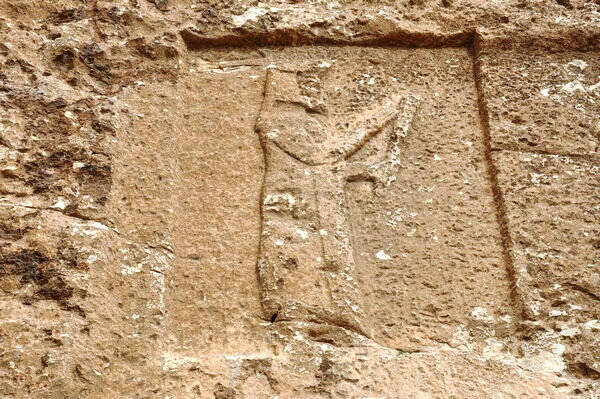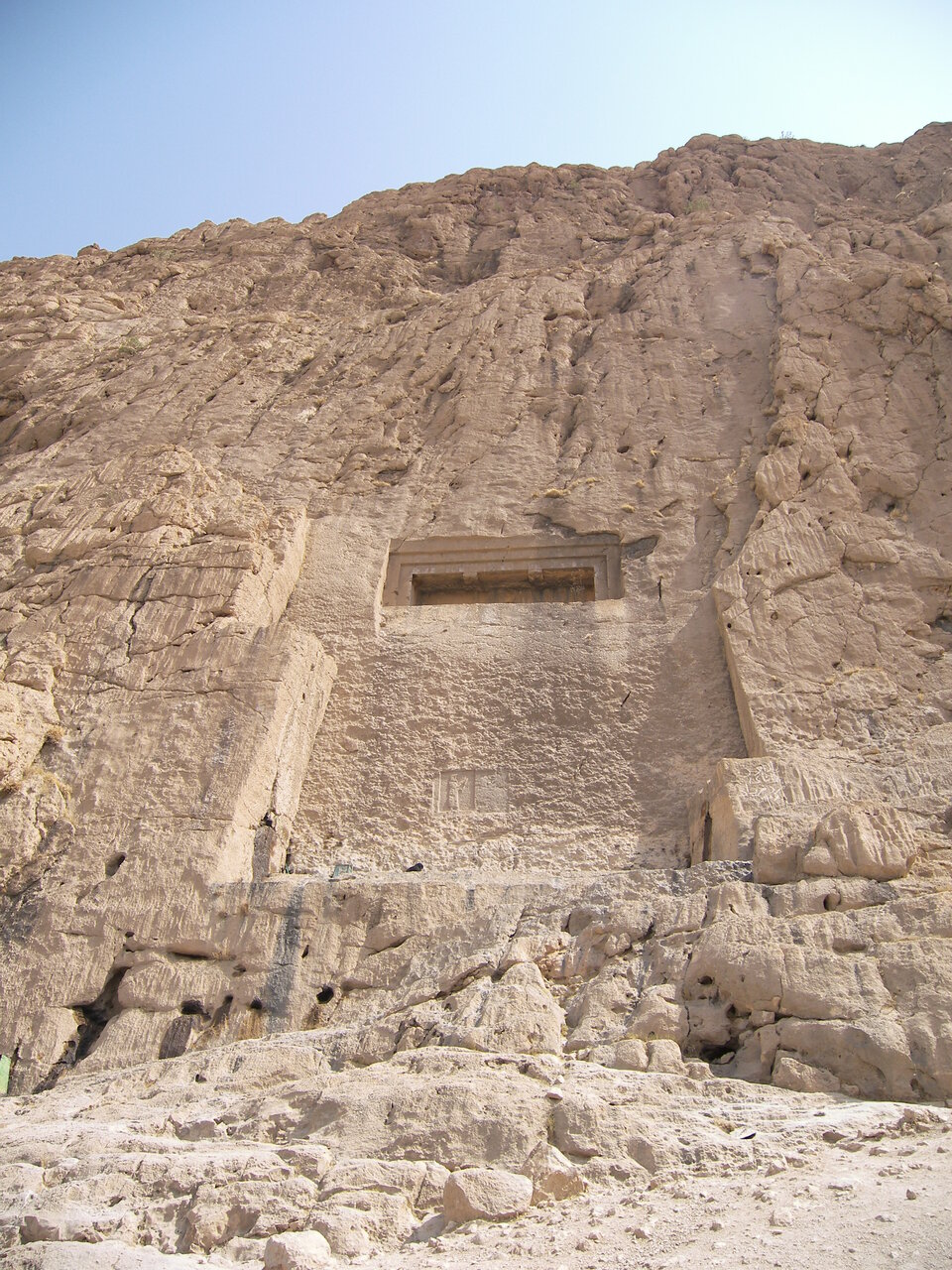Discover Dokkan-e Daud: an ancient marvel in western Iran

TEHRAN - Nestled in the rugged landscapes of Kermanshah province in western Iran, Dokkan-e Daud (English: David's Store) is an enigmatic and historically rich site that beckons history enthusiasts and adventure seekers alike. Situated near Sarpol-e Zahab, this late Achaemenid rock site is both a tomb and a relief, offering a glimpse into Iran’s ancient past and its evolving artistic and cultural influences.
Perched twelve meters above ground, Dokkan-e Daud is a fascinating rock-cut tomb featuring an intricately carved relief known as Kil-e Daud, or David’s Tomb. The site has captivated historians and archaeologists for centuries, with Sir Henry Creswicke Rawlinson, the British Orientalist, having documented it as early as 1836.
The tomb itself consists of a chamber accessed through a wide entrance framed by two cylindrical columns, reminiscent of the grand architectural elements seen in Pasargadae palaces. Although time has eroded much of the structure, the remains of the column bases and capitals still hint at its former grandeur. Inside the chamber, shelves carved into the rock walls once held sacred offerings, while an oval-shaped grave on the left side of the room suggests its function as a burial site.

A mysterious relief with Zoroastrian influences
Beneath the tomb lies the most intriguing feature of Dokkan-e Daud—a full-height relief depicting a robed figure wearing a distinctive Bashlick cap that covers his neck and ears. In his left hand, he holds a Barsom, a bundle of sacred twigs used in Zoroastrian rituals, while his right hand is raised in reverence.
This unfinished relief, possibly intended to include a fire altar, reflects strong Achaemenid artistic traditions, though its precise dating remains a topic of scholarly debate.
Achaemenid, Median, or Parthian? A site shrouded in mystery
For years, scholars debated whether Dokkan-e Daud belonged to the Median, Achaemenid, or even Parthian periods. Initially attributed to the Medes due to its stylistic elements, recent studies suggest it was likely created during the late Achaemenid period (4th-3rd centuries BC) or even under the Seleucid or early Parthian rule.
Unlike the Greek-influenced art of the Seleucid era, the reliefs at Dokkan-e Daud retain the distinctly Persian style of the Achaemenid Empire.

Visiting Dokkan-e Daud, a rewarding challenge
For travelers eager to explore this ancient wonder, reaching Dokkan-e Daud requires some effort. Located near a vast historical graveyard along the route between Sarpol-e Zahab and West Kerend, the site is visible from the main road but can only be accessed by climbing the rocky terrain. This added challenge makes visiting the site a thrilling experience for those seeking an off-the-beaten-path adventure.
Dokkan-e Daud was officially registered as a national heritage site in 1931, highlighting its cultural and historical significance. The site remains an essential stop for those interested in Iran’s ancient civilizations, offering a breathtaking combination of history, mythology, and archaeology set against the dramatic backdrop of Kermanshah’s mountainous terrain.
Dokkan-e Daud stands as a silent witness to centuries of history, embodying Iran’s rich heritage and the artistic mastery of its ancient civilizations. Whether you are a history buff, an archaeology enthusiast, or a curious traveler, a visit to this extraordinary rock-cut tomb promises an unforgettable journey into the heart of Persia’s past.
AM
Leave a Comment